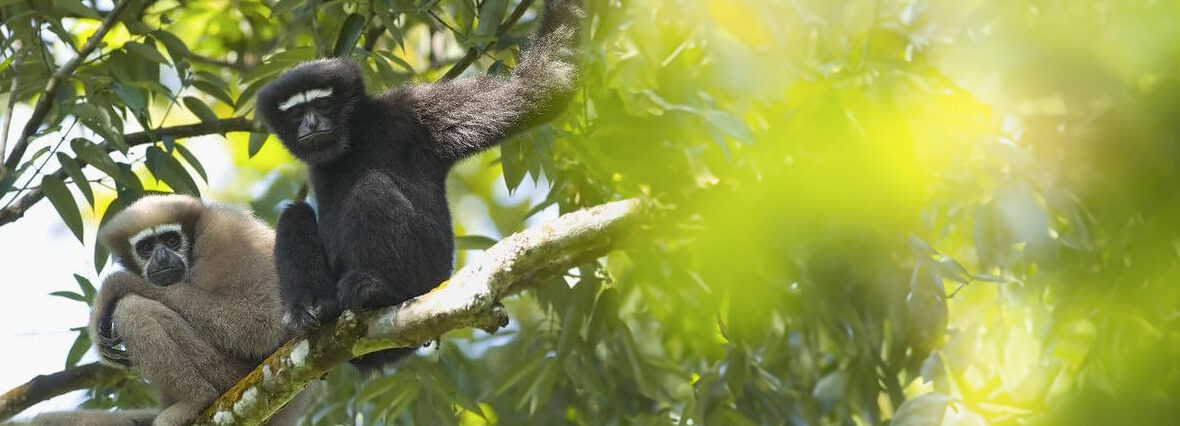
The western hoolock gibbon can be found in India. They prefer mixed evergreen forests, such as dipterocarp forests, and often times in mountainous terrain. These primates are also found in rural settings, such as plantations and gardens. Hoolocks face the threats of habitat loss and destruction at the hands of residential and commercial developments, mining, quarrying, fires, fire suppression, slash and burn agriculture, and the logging industry; hunting; and trapping. They are listed as Endangered by the IUCN with a decreasing population trend.
First the Stats…
Scientific name: Hoolock hoolock
Weight: Up to 19.84 lbs.
Length: Up to 35.43 inches
Lifespan: Up to 60 years
Now on to the Facts!
1.) These primates live in small family groups (called a troop) that consist of a mated pair and their offspring.
2.) Western hoolocks are the 2nd largest gibbon, after the siamang gibbon.
3.) They are diurnal (active during the day).
4.) Hoolocks are arboreal and move about the trees quickly by brachiating (swinging from their arms).
5.) Territories are fiercely defended against other hoolock individuals.
But wait, there’s more on the western hoolock gibbon!
6.) These critters are loud and sound off frequently. Their songs consist of an introductory procession, an organizing procession, and a great call procession.
7.) The male participates in the great call procession, which is uncommon for other gibbons.
Did you know…?
Hoolocks are the fastest known non-flying, tree-dwelling mammal.
8.) The western hoolock gibbon is predominantly a herbivore (more specifically a folivore and a frugivore). Ripe fruits, flowers, leaves, shoots, the occasional ants, silkworms, and a variety of other small insects are all on the menu.
9.) Like other gibbons they are monogamous (mate for life).
10.) Females reproduce every 2 – 3 years and undergo up to a 7 month gestation (pregnancy) that yields up to 2 infants.
But wait, there’s still more on the western hoolock gibbon!
11.) Infants are born with white or pale fur that darkens to black at around 6 months of age in males yet stays light colored in females.
12.) Due to their diet of fruit, these gibbons are important seed dispersers that aid the forest in its growth.
13.) Leopards, birds of prey, and large snakes all prey on these gibbons.
Now a Short Western Hoolock Gibbon Video!
Be sure to share & comment below! Also, check out the Critter Science YouTube channel. Videos added regularly!
Want to suggest a critter for me to write about? Let me know here.
Some source material acquired from: Wikipedia & IUCN
Photo credit: Animal Wiki



